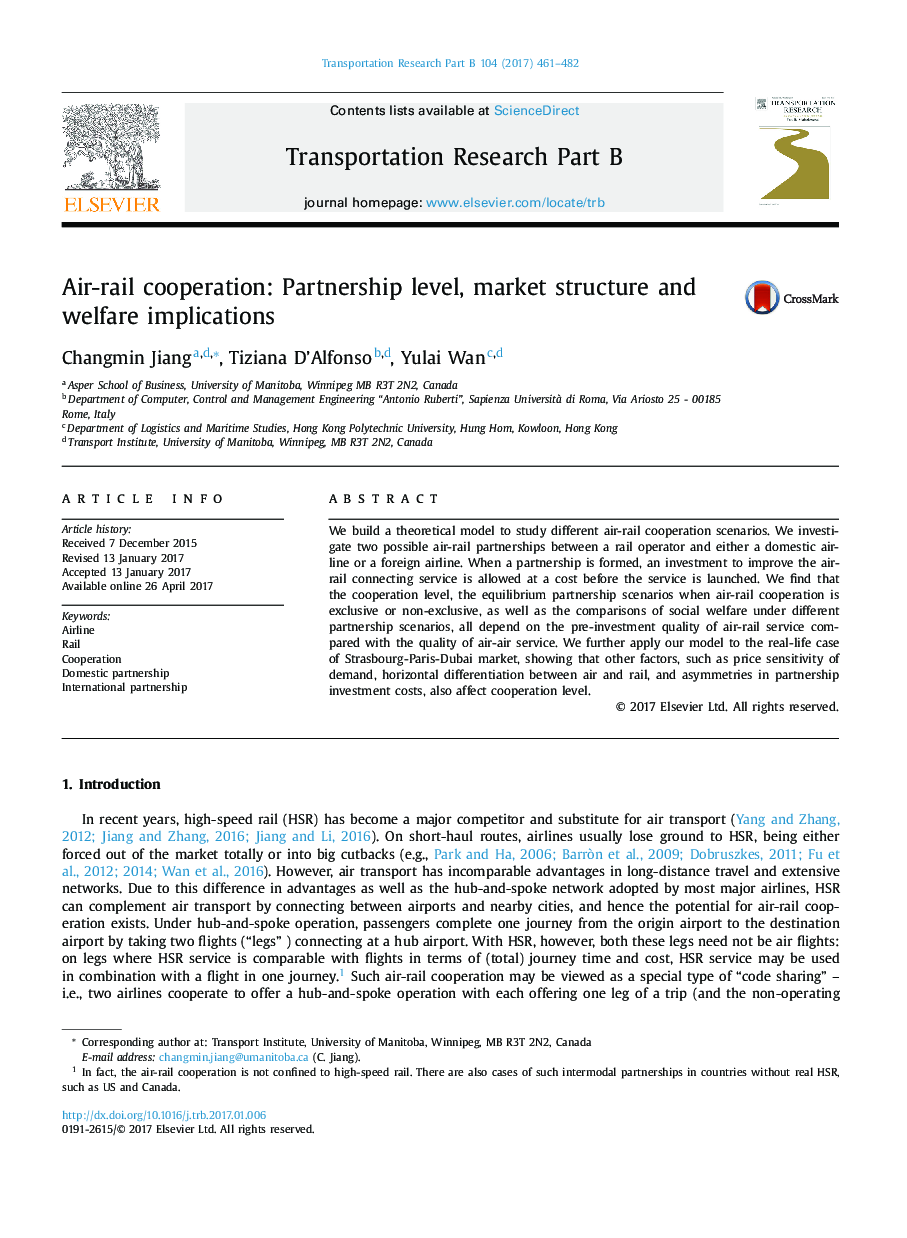| کد مقاله | کد نشریه | سال انتشار | مقاله انگلیسی | نسخه تمام متن |
|---|---|---|---|---|
| 5126971 | 1488942 | 2017 | 22 صفحه PDF | دانلود رایگان |
- This paper builds a theoretical model to study different air-rail cooperation schemes.
- We investigate two possible air-rail partnerships: a domestic partnership between domestic airline and rail operator, and an international partnership between foreign airline and rail operator.
- We find that the cooperation level when both partnerships coexist is lower than those when only one partnership exists.
- We then show that the equilibrium partnership scenarios, as well as the comparisons of social welfare under different partnership scenarios, depend on the pre-investment air-rail service quality.
- We further apply our model to the real-life case of Strasbourg-Paris-Dubai market.
We build a theoretical model to study different air-rail cooperation scenarios. We investigate two possible air-rail partnerships between a rail operator and either a domestic airline or a foreign airline. When a partnership is formed, an investment to improve the air-rail connecting service is allowed at a cost before the service is launched. We find that the cooperation level, the equilibrium partnership scenarios when air-rail cooperation is exclusive or non-exclusive, as well as the comparisons of social welfare under different partnership scenarios, all depend on the pre-investment quality of air-rail service compared with the quality of air-air service. We further apply our model to the real-life case of Strasbourg-Paris-Dubai market, showing that other factors, such as price sensitivity of demand, horizontal differentiation between air and rail, and asymmetries in partnership investment costs, also affect cooperation level.
Journal: Transportation Research Part B: Methodological - Volume 104, October 2017, Pages 461-482
